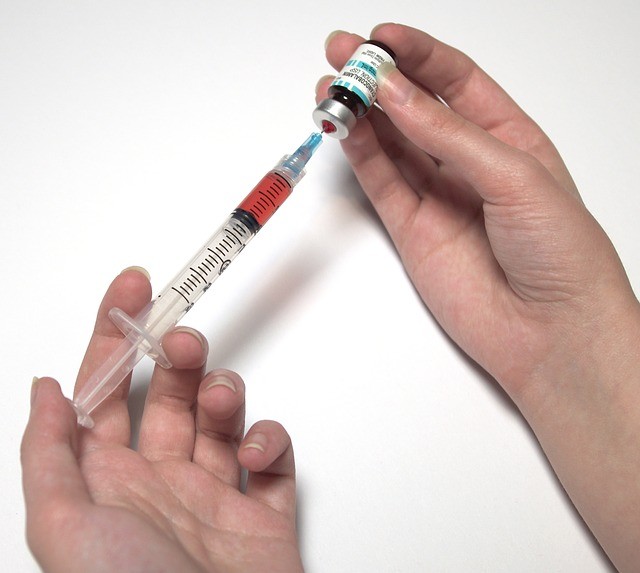Learn the truth about the poison used in vaccines. Check out the article we found over at The Vaccine Reaction.
by Kate Raines
The Vaccine ReactionWarning of the dangers of formaldehyde in the workplace, the government’s own Occupational Safety and Health Administration (OSHA) says, “health hazards of formaldehyde are primarily due to its toxic effects after inhalation, after direct contact with the skin or eyes by formaldehyde in liquid or vapor form, and after ingestion” adding that “Ingestion of as little as 30 ml of a 37% solution of formaldehyde (formalin) can result in death” and “Diverse damage to other organ systems including the liver, kidney, spleen, pancreas, brain, and central nervous systems can occur from the acute response to ingestion of formaldehyde.”
Yet, they don’t even mention the effects of exposure by injection, as when formaldehyde is pumped into a newborn baby as part of the HepB vaccine, currently given right after birth, or along with a host of other vaccine ingredients injected over the next few months of the infant’s life.
Rationale for Using Formaldehyde in Vaccines
Most people first become familiar with noxious-smelling formalin, the liquid form of formaldehyde, in high school biology labs. It only takes a whiff to know the stuff is poison. But scientific and hospital laboratories are not by any means the only, or even the most common, sources of formaldehyde exposure. For one thing, formaldehyde is a natural byproduct of decomposition, and as such is found in very small amounts in most living organisms, from plants to animals, and including humans. In the limited quantities involved in natural exposure, as occurs when formaldehyde is produced, inhaled or ingested in tiny amounts, the chemical is rapidly broken down by specialized enzymes in the body and is either breathed out as CO2 or excreted in urine.
It is this natural ability of the body to neutralize naturally occurring formaldehyde that is proposed as justification for using formaldehyde as a vaccine ingredient, although few data actually address the pharmacologic differences between ingesting or inhaling the chemical and injecting it, effectively bypassing the body’s usual method of breaking down the toxin. One might assume that, since formaldehyde is routinely used in many vaccines given to babies, even tiny and vulnerable premature infants, studies would have looked at whether it is safe to inject this poison directly into their immature systems. No such studies appear to have been done.
Formaldehyde Is a Recognized Carcinogen and Health Threat
As represented by the National Institute of Environmental Health Sciences (NIEHS),7 a number of watchdog agencies including the American Cancer Society, the FDA, the National Cancer Institute (NCI), and others have classified formaldehyde as a known or probable cancer-causing agent, or carcinogen, and OSHA adds that it is not only a “complete carcinogen” but also “a sensitizing agent that can cause an immune system response upon initial exposure.” It is known to be highly irritating to the eyes and respiratory tissues and skin, particularly with repeated exposure.
Because of its classification as a toxin and carcinogen, strict guidelines are in place to define acceptable levels of formaldehyde, particularly for people considered to be at higher risk due to their environment (those living in FEMA emergency housing trailers or RVs, for example, or those with new carpeting), or to their professions (embalmers, hair stylists using certain products and medical lab technicians among others). For workers at risk of exposure to high levels of formaldehyde vapors, OSHA recommends annual training to alert workers to the dangers of exposure above recommended concentrations (formaldehyde levels above 0.1 parts per million, or ppm, can cause respiratory irritation and levels above 0.5 ppm constitute an “action level” warranting “initiation of worker medical surveillance”).
Little Is Known About Injected Formaldehyde
In the majority of studies, human data on the toxic effects of formaldehyde refer to the compound inhaled as a gas, and it is generally reported to be essentially harmless and easily metabolized, with most governing bodies agreeing that the small amounts inhaled, ingested, or injected in vaccines are safe for even the smallest of infants. A model-based study, “assuming metabolism at the site of injection only,” reported that “formaldehyde is essentially completely removed from the site of injection within 30 minutes,” and used that modeling data to predict that infant systemic levels would reflect less than 1% of the usual environmental exposure level.
The Food and Drug Administration reports that, “There is no evidence linking cancer to infrequent exposure to tiny amounts of formaldehyde via injection as occurs with vaccines.”16 What they do not seem to consider is that infants are systematically given multiple doses of vaccines at one time, so it is the combined level of formaldehyde exposure that needs to be calculated, not the amount in a single vaccine dose. According to Dr. Sherri J. Tenpenny’s Integrative Medical Center, by the time a child has reached 5 years of age, he or she has been injected with a total of 1,795 micrograms (mcg), or 1.795 milligrams of formaldehyde, as follows18:
- Hepatitis b – 3 doses x 15 mcg each
- DTaP – 5 doses x 100 mcg each
- Polio (IPV) – 5 doses x 200 mcg each
- Influenza – 6 doses x 25 mcg each
- Hepatitis A – 1 dose x 100 mcg each
Next Article: 75% of children who received vaccines in Mexican town now dead or hospitalized. Is this a part of depopulation test?
Read full article: Formaldehyde: A Poison and Carcinogen







Tara Maiorella
Nov 16. 2015
Shelby Anne
Eric Chase Torrens
Rhonda Oliver Van Lare
Nov 16. 2015
Corey Van Lare